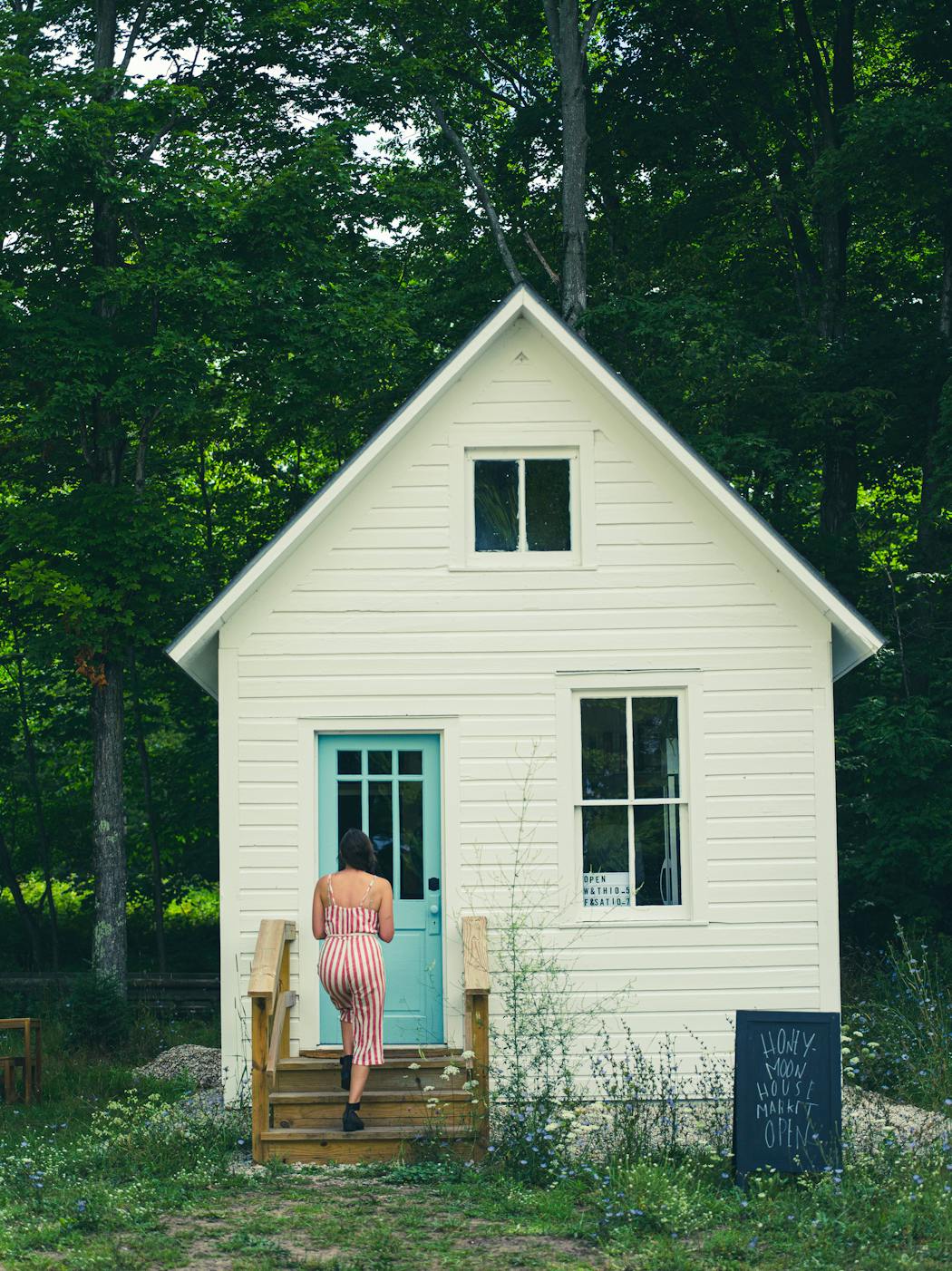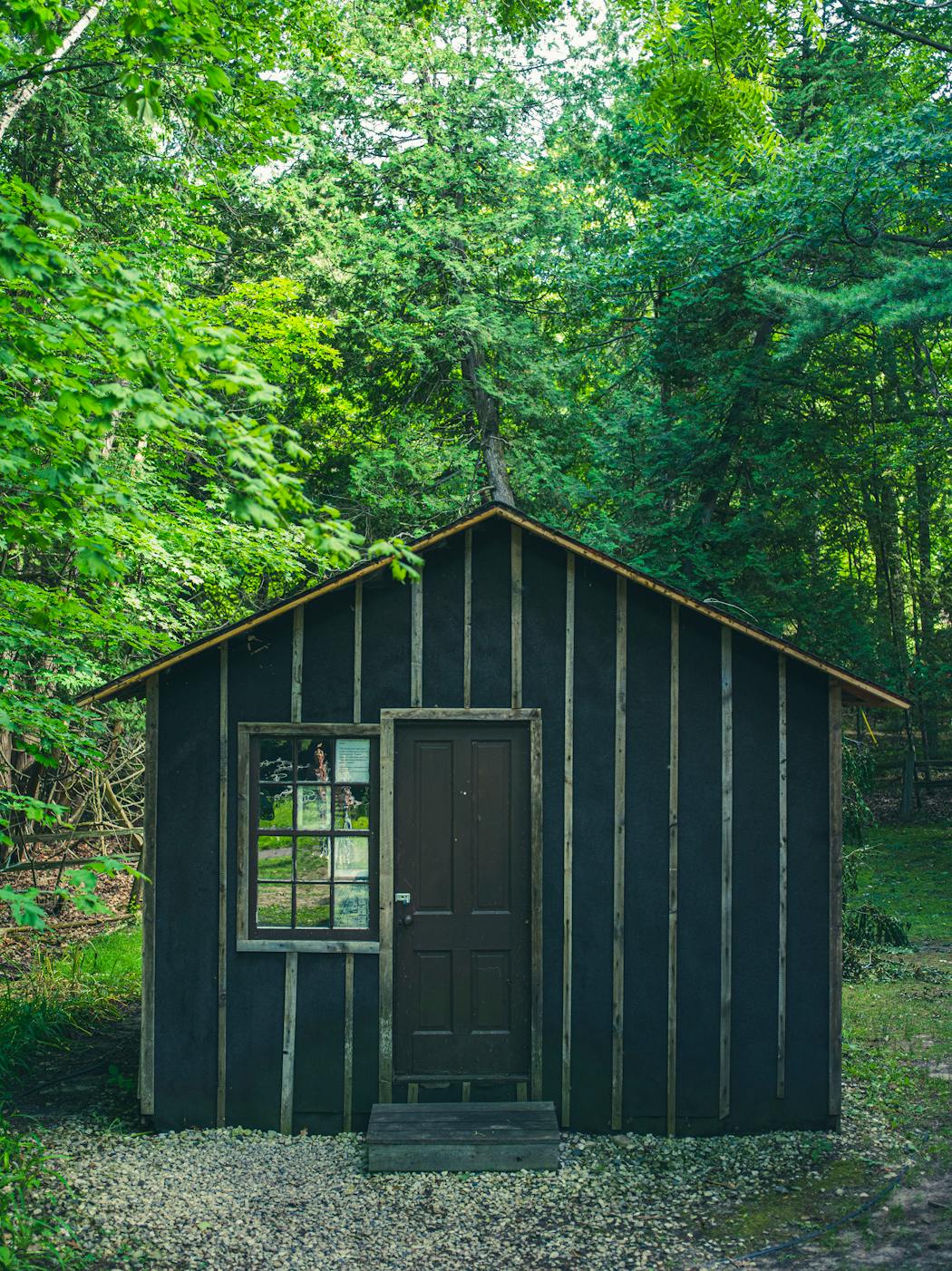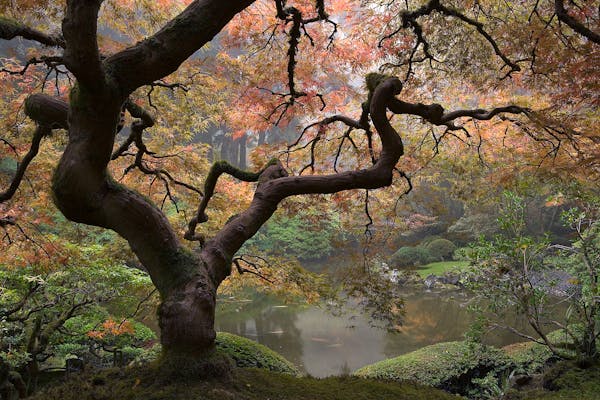Five hours after leaving Chicago, we ran out of pavement. At the tip of the Door Peninsula in northeastern Wisconsin, the ice cream parlors disappeared. Just a simple ticket booth, and the breakwaters beyond, and a small archipelago gathered like clouds on the horizon. A grinning crewman waved us aboard a 92-ton ferry, and before my wife, Mel, and I could exit our car, the Arni J. Richter was plowing through Lake Michigan.
Washington Island beckoned less than 4 miles ahead, but a certain darkness whispered beneath the lake. The French called this strait Porte des Morts, or Death's Door, most likely cribbing the moniker from the Potawatomi. Here, where the warmer and shallower waters of Green Bay meet the darker and cooler waters of Lake Michigan, the currents swirl and rocky shoals hide just beneath the surface. Shipwrecks still litter the shallows.
Although it's technically part of Door County, the 24-square-mile island leaves the trappings of tourism for the mainland. Its biggest gift shop doubles as a True Value hardware store. Cellphone service is spotty, at best. There's no craft brewery, no chain hotel, no definable business district — and that's the point. As Matt Poole, a co-manager of the Hotel Washington, later explained: "Washington Island is where Door County people go to remember what Door County used to be."
In the fall of 1870, four young bachelors from the Icelandic fishing village of Eyrarbakki landed on Washington Island. Their arrival, in turn, drew more immigrants from their homeland. By the end of the century, the island had become a center of Icelandic culture.
Just weeks after returning from that now tourist-swamped nation myself, I was perhaps aiming for a glimpse of what Iceland used to be. Washington Island is the second-oldest Icelandic settlement in America, and if you know where to look, hints of that history still abound.
Hidden beneath a grove of towering maples, our charming hotel near the harbor was no exception. Established in 1904 by Ben Johnson, another Eyrarbakkian, the colonial-style Hotel Washington offers eight small guest rooms and two shared bathrooms above a farm-to-fork restaurant awash in natural light. Once the island's social hub, the hotel retains an old-world feel, despite the updates.
Valhalla on the Lake
When Johnson needed a $500 loan to build his hotel, he turned to the richest Icelander he knew: Chester Hjortur Thordarson, a manufacturing millionaire who would soon purchase the island next door. Richard Purinton, a local historian and author of a nearly 500-page tome on Thordarson's exploits, joined us on the 10-minute ferry ride to Rock Island the next morning.
Thordarson immigrated to America in his youth, Purinton explained. At 27, he started his own company in Chicago, amassing nearly 100 electrical patents. Having earned a fortune, Thordarson bought up every privately held parcel on Rock Island. A naturalist at heart, he developed just 30 of his 777 acres, leaving the remainder untouched.
A mammoth stone boathouse loomed over us as we stepped off the ferry. Thordarson called it the Crown Jewel of Art and Nature. Designed by architect Frederick Dinkelberg, best known for his work on the Flatiron Building in New York, this ostentatious display of wealth is listed on the National Register of Historic Places.
Thordarson's heirs later sold the entire estate to the Wisconsin Department of Natural Resources. Today it's known simply as Rock Island State Park.
Mel and I hit the popular Thordarson Loop Trail, a five-mile trek that circumnavigates the island. Along the way, we toured the Pottawatomie Lighthouse, built of local stone in 1858. Replacing the first federal lighthouse on Lake Michigan, the current iteration is open to the public and restored to its 1910 interior.
Distracted by the scenery, we missed our turn and completed the silent and sun-dappled Fernwood Trail instead. We then paid our respects to Thordarson himself, buried beneath a modest tombstone in the woods, and reluctantly boarded the last ferry back to Washington Island, wishing we'd packed our tent.
Bitters and a blast of ice water
My regrets faded the next morning when I found myself under the spell of a local curio. A whale tooth carved in the visage of Gudmundur Gudmundsson, one of the first Icelanders on the island, stood upright in a small glass case — a stunning, if peculiar, piece by Icelandic artist Halldor Einarsson. We were perusing the Jacobsen Museum, named for Jens Jacobsen, a Danish immigrant and local eccentric. Jacobsen had assembled something of a people's history of Washington Island: Indigenous and immigrant artifacts, fossils, maps, model ships and that tooth — all in a cabin smaller than an RV.
For lunch, Mel and I shared a chicken pesto panini at Jackson Harbor Soup, watching from our waterside table as the Rock Island ferry crawled into port. Afterward, we stopped for refreshments at Nelsen's Hall & Bitters Club. Established in 1902 by Tom Nelsen, another Danish immigrant, the bar survived Prohibition by applying for a pharmaceutical license and selling Angostura bitters — then considered a stomach tonic — by the shot.
"It was also 90-proof," said Sarah Jaworski, whose mother has owned the pub and restaurant since 1999. "So the loophole in the system was found."
Today, Nelsen's Hall sells more than 10,000 shots of bitters a year. After Nelsen died, his wife and nephew started the Bitters Club, offering a membership card to every first-timer. Jaworski poured me a syrupy shot. It was lukewarm and tasted like a mouthful of cloves.
I might have gone another round, but the lake beckoned. Just beyond the town cemetery, Schoolhouse Beach spills into a harbor lined with tall green cedars. Signs threatened a $250 fine for removing beach stones, which seemed excessive until the panorama unfolded: a Milky Way of rounded rocks — polished smooth over the millenniums by crashing waves and glacial erosion — glistened white through the azure water.
Toddlers bounced in the surf. Teenagers leaped from a bright red pontoon boat. So we jumped in ourselves. Unable to shriek, we gasped. Our limbs seized. The water was roughly 50 degrees. We scrambled back to our blankets. I no longer tasted the bitters. I no longer felt my toes.
On the trail of big ideas
The cold plunge revived us from the afternoon doldrums, so we tacked on one last excursion. That morning, we'd passed a small tar-paper shack that had once belonged to Norwegian American economist Thorstein Veblen, author of "The Theory of the Leisure Class," a classic 1899 treatise in which he coined the term "conspicuous consumption." According to the placard, he summered here for nearly 30 years, reading, writing and learning Icelandic.
Owned by the Door County Land Trust, the inconspicuous shack is part of a poorly marked 32-acre nature preserve. We parked on the shoulder of Main Road, parted the trees and followed a narrow path through a forest of cedar and hemlock. Maybe 20 minutes later, we glimpsed Lake Michigan lapping at the shores ahead, and then, to our left, Little Lake, freckled with water lilies.
And it was here, overlooking a lake within an island within a lake, that Veblen steeped himself in nature and Icelandic, questioning the treacherous waters of capitalism and consumption. Mel and I stood on the economist's slanted dock, purple irises crowding the cedar pilings, buoyed by an island still fighting the tide.





